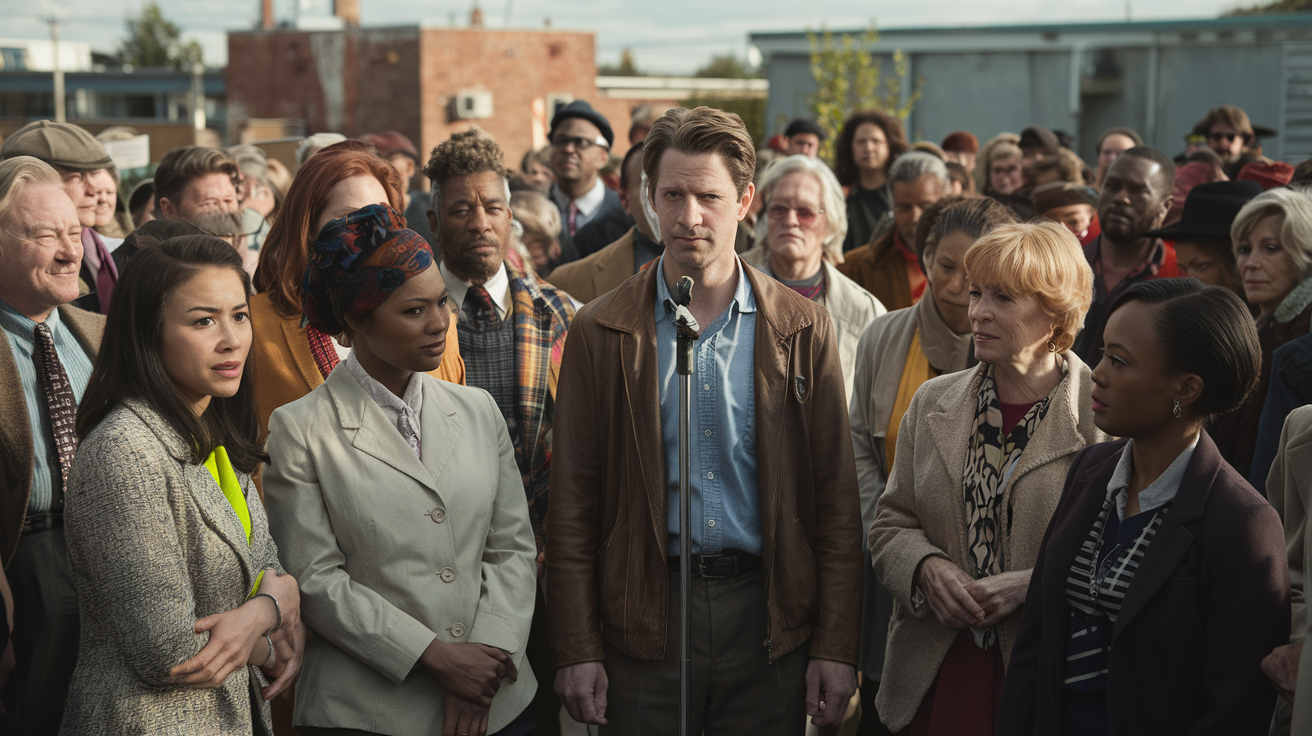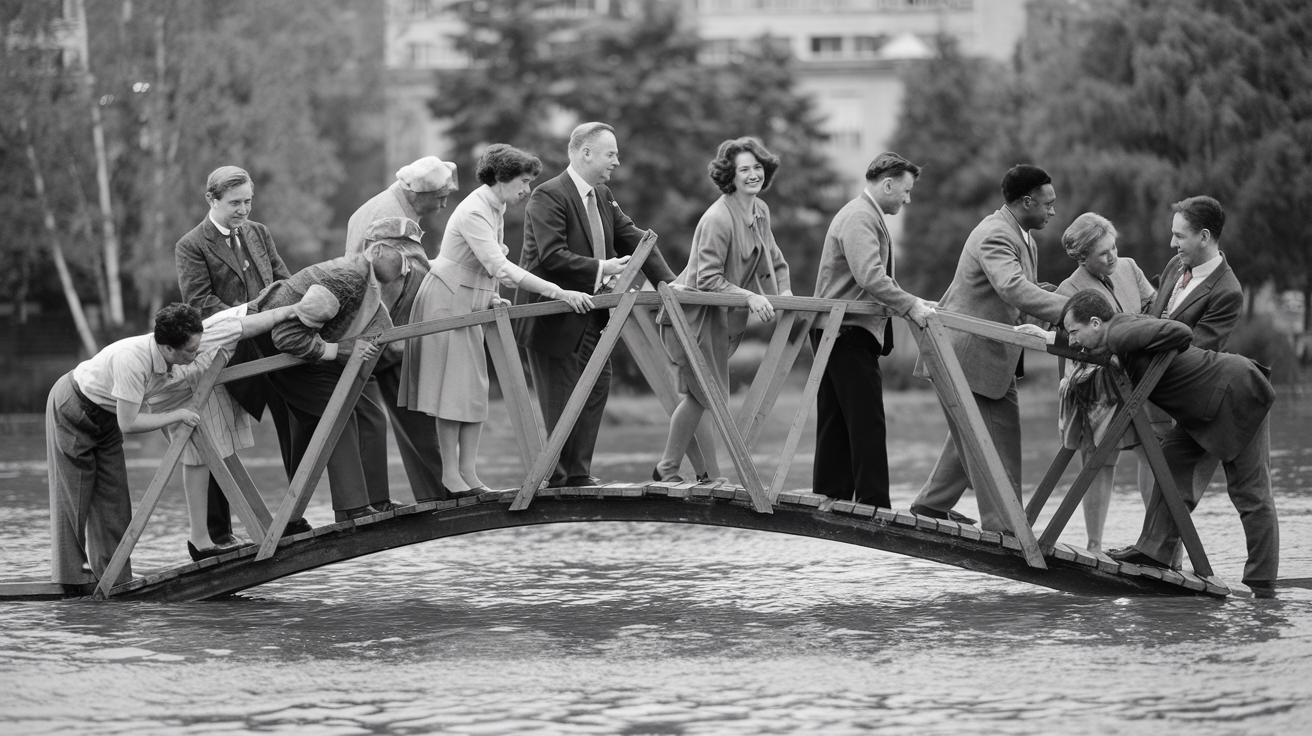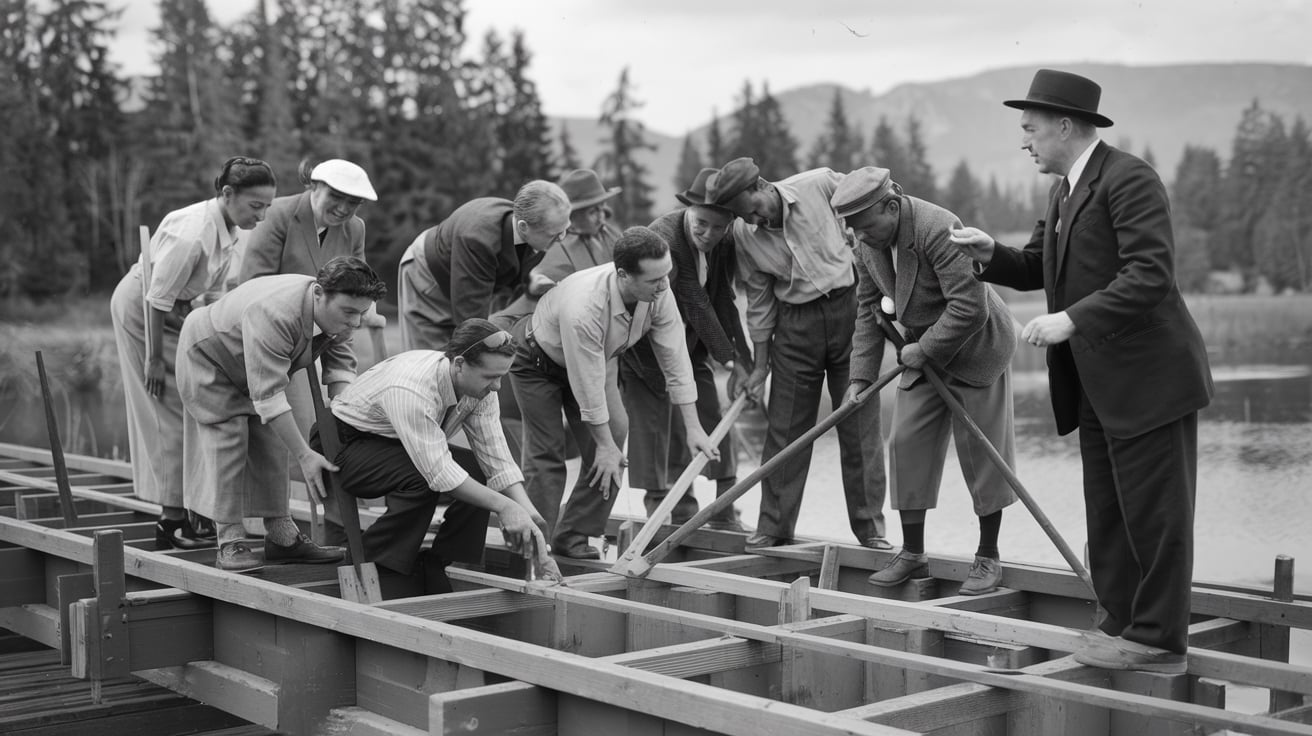In an age where digital content saturates our lives, the power of archival footage shines through as a compelling vessel for storytelling. These visual remnants of the past do more than document history; they breathe life into bygone eras, offering a window into the emotions, struggles, and triumphs of those who came before us.
Whether it’s a short clip capturing a moment in time or a longer documentary showcasing historic events, archival footage evokes empathy and bridges generational divides. It transforms stories from mere facts into shared experiences that resonate deeply with audiences.
But the significance of archival footage extends far beyond individual narratives. It serves as a vital tool for connecting diverse communities across cultural and geographic boundaries. By presenting underrepresented perspectives and forgotten stories, these invaluable materials help illuminate common ground among people who might otherwise view each other as strangers.
As we explore how archival footage fosters these connections, we will uncover ways it enriches education, inspires social movements, and encourages intergenerational dialogue. Join us on this journey to discover how embracing our collective past can create pathways toward understanding and unity in our increasingly fragmented world.
Preserving History.
Archival footage serves as a vital repository of collective memory, capturing moments that define not only individual lives but also entire communities and nations. Each frame provides a glimpse into the past, encapsulating emotions, events, and societal norms that once shaped our world.
For example, the civil rights movement’s archival visuals—like the peaceful protests captured through film—offer invaluable insights into the struggles and victories of those who fought for justice and equality. By preserving these significant historical records, we create a tapestry of human experience that can foster understanding across generations.
Incorporating historical context is essential when utilizing archival footage to educate contemporary audiences. It’s not just about showing old films; it’s about weaving a narrative that explains the “why” behind each moment.
Documentaries such as Ken Burns’ “The Civil War” utilize archival clips alongside narratives to bring depth to a tumultuous period in American history. By contextualizing this footage within its sociopolitical landscape, viewers gain insights into the complexities of historical events, helping them understand their implications in today’s world.
This storytelling approach bridges gaps in knowledge and engenders empathy towards people from different backgrounds.
Moreover, when educators incorporate archival footage within classroom settings, they transform passive learning into engaging experiences. A history teacher might show segments from World War II newsreels to spark discussions on wartime propaganda or citizen response to conflict.
Such rich visual stimuli encourage students to delve deeper into historiography while fostering critical thinking skills. Engaging with primary sources allows young learners to connect with history personally—not merely as facts in a textbook but as vital stories shared by real individuals.
Ultimately, preserving history through archival footage creates an avenue for connection among diverse audiences. It invites us all to engage with narratives that may differ from our own lived experiences while reinforcing the importance of shared humanity.
As we explore these past moments together, we are reminded that regardless of our cultural or historical backgrounds, we are united by our stories—and understanding those stories is key to building bridges between people today and tomorrow.
Enhancing Educational Experiences.
In today’s dynamic educational landscape, archival footage serves as a powerful tool to enrich the learning experience in classrooms across various subjects. By integrating historical films and recordings into lessons, educators can provide students with a tangible connection to the past.
For instance, a history teacher might show clips from civil rights marches or World War II propaganda films to facilitate discussions about social justice, conflict resolution, and the evolution of societal values. These visual aids not only make history more engaging but also help students grasp the complexities of real-life issues that shape their world today.
Moreover, visual storytelling has proven particularly effective at fostering deeper understanding among diverse learners. Many students struggle with traditional text-based materials; however, when they are presented with rich audiovisual narratives, comprehension and retention rates often soar.
Incorporating archival footage enables learners who may have different styles—visual or kinesthetic—to connect with content on multiple levels. A notable example can be drawn from schools implementing project-based learning that involves researching local history through archival images and videos.
This method not only enhances critical thinking skills but allows students to work collaboratively while gaining insight into their community’s heritage.
Additionally, using archival material in education promotes inclusivity by showcasing stories from marginalized voices throughout history. Teachers can bring attention to lesser-known figures or events by delving into archives that feature oral histories or personal accounts preserved through time.
This practice encourages dialogues around identity and equity while helping students understand the myriad experiences that contribute to our collective narrative. For instance, documentaries highlighting immigration journeys or indigenous cultures foster empathy and broaden awareness within student populations.
Ultimately, incorporating archival footage into classrooms empowers students to become active participants in their education rather than passive recipients of information.
By leveraging the emotional impact of visual storytelling along with hands-on exploration of historical contexts, educators can create an immersive environment that inspires curiosity and fosters connections among peers—building bridges between generations as they journey together through time.
Inspiring Cultural Understanding.
Archival footage serves as a vivid portal into the rich tapestry of human experiences, showcasing the diverse cultures that populate our world. By preserving moments in time—be it through traditional celebrations, daily life, or pivotal historical events—this footage documents the unique customs and practices of various communities.
For instance, the visual documentation of Indigenous rituals can provide profound insights into spiritual beliefs and communal gatherings that may otherwise remain unseen. When educators, filmmakers, or social activists bring such archival materials to light, they not only preserve histories but also foster admiration for cultural diversity.
Highlighting shared human experiences through film is particularly powerful in bridging cultural gaps. Consider how documentaries like “13th” by Ava DuVernay utilize archival footage to draw connections between institutional racism throughout history and contemporary issues faced by marginalized groups today.
By illustrating these shared struggles within a broader societal context, audiences from different cultural backgrounds can relate to one another on multiple levels. The inclusion of personal narratives woven with historical perspectives invites viewers to reflect on their own identities and challenges while simultaneously fostering empathy toward others’ experiences.

Moreover, film festivals dedicated to archiving and showcasing multicultural narratives invite communities to come together in understanding. Initiatives like the “Cultural Documents” series at festivals allow for interactive discussions surrounding the featured films.
Community members engaging with these archives often discover unexpected similarities in their values, aspirations, or struggles regardless of geographic differences. Through carefully curated screenings paired with discussions led by filmmakers or cultural historians, participants gain new lenses through which they can view their own culture alongside others.
Ultimately, leveraging archival footage as a medium for storytelling nurtures an environment where respect and appreciation for diversity flourish. It enables us not only to celebrate what makes each culture unique but also to recognize our shared humanity amidst those differences—a vital step towards global unity and mutual understanding in an increasingly interconnected world.
Supporting Social Movements.
Archival footage plays a pivotal role in supporting social justice initiatives, serving not just as a historical repository but also as an empowering tool for contemporary activists. When this footage is brought to light, it can illustrate the struggles faced by marginalized communities, showing the evolution of their fight for equity and rights.
For example, the use of video clips from civil rights marches in the 1960s provides powerful context to today’s movements like Black Lives Matter. These historical visuals remind current generations that activism has deep roots, often igniting passion and purpose while illustrating the continuity of struggles across decades.
Additionally, archival footage serves to amplify voices that have often been silenced or overlooked. Documentaries such as “13th” by Ava DuVernay incorporate historic clips of injustices faced by African Americans—these include everything from speeches at rallies to news reports on significant events.
Such materials help foster understanding about systemic racism and inspire viewers toward collective action. By highlighting moments where individuals fought back against oppression, archival materials motivate present-day activists who seek to challenge contemporary injustices.

Moreover, documenting past movements through archival footage creates connections among community members invested in social change. Initiatives featuring local archives can see diverse groups coming together for film screenings and discussions informed by history.
These gatherings foster not only education but also collaboration among people who may otherwise feel isolated in their causes. For instance, events showcasing LGBTQ+ archives could unite both older and younger activists around shared goals of acceptance and equality, illuminating how far we’ve come while reinforcing the work still ahead.
Ultimately, leveraging archival footage encourages a continuous dialogue about injustice and empowerment across generations. It allows individuals to draw parallels between past examples of courage and current societal challenges they face today—sparking ambition for more profound changes within their communities.
In bridging these temporal gaps through storytelling rooted in lived experiences, we cultivate spaces conducive to healing, solidarity, and meaningful action inspired by our collective heritage.
Facilitating Documentary Filmmaking.
Documentary filmmaking serves as a powerful medium for storytelling, and the incorporation of archival footage can significantly deepen the narrative. Archival resources not only provide visual and auditory context but also lend authenticity to the tales being told.
By rooting contemporary themes in historical experience, filmmakers can engage their audience with a poignant sense of continuity. For instance, Ava DuVernay’s documentary “13th” weaves together present-day activism with more than a century’s worth of archival footage related to race relations and civil rights struggles in the United States.
This layered storytelling captures both the historical roots and ongoing repercussions of systemic racism, making it abundantly clear that America’s past is intricately tied to its current issues.
In practical terms, utilizing archival material in documentaries can be transformative for the narrative flow. The 2017 film “I Am Not Your Negro,” adapted from James Baldwin’s unfinished manuscript, employs an array of historical clips to visually reflect Baldwin’s insightful commentary on race in America.
Audiences are not only confronted with Baldwin’s eloquence but are shown real events—marches, protests, and pivotal moments—that evoke emotional responses while contextualizing his words. This symbiosis of text and visuals creates a powerful dialogue between different eras, inviting viewers to examine how past injustices resonate today.
Furthermore, documentaries like “Won’t You Be My Neighbor?” about Fred Rogers harmonize nostalgia with social critique by thoughtfully integrating archival content from “Mister Rogers’ Neighborhood.”
Beyond charming many viewers with childhood memories, it sheds light on broader societal challenges through Mr. Rogers’ straightforward yet profound messages about kindness and acceptance during turbulent times in American history.

By juxtaposing this archival footage against present societal conversations about empathy, community support, and mental health awareness, filmmakers enhance their narratives while inspiring renewed dedication toward social compassion.
The utilization of archival footage can serve as an effective tool in bridging gaps between generations and facilitating understanding across diverse audiences.
As filmmakers breathe life into these historical documents, they invite viewers to reflect on both their personal histories and collective experiences—fostering connection among individuals who might otherwise feel disconnected from one another through time or background.
With rich narratives forged through such methods, documentaries have the unique ability to craft a shared cultural memory that resonates deeply within communities while uncovering lessons that remain relevant for future generations.
Fostering Intergenerational Dialogue.
Archival footage serves as a powerful tool for bridging generational gaps, sparking meaningful conversations between the young and old. By bringing visual history into intimate settings, families can engage in dialogue about their shared pasts in ways that mere verbal recollections often fail to elicit.
For instance, when grandchildren watch home videos of their grandparents celebrating milestone events or engaging in daily life decades ago, it opens pathways for questions about family traditions and personal values. These discussions not only honor the experiences documented through archival media but also help younger generations better understand their roots.
Moreover, using archival materials to explore significant historical events fosters a sense of connection and continuity across generations. When older family members recount their personal experiences during major cultural moments—such as civil rights marches or local festivals—while accompanied by relevant footage, the memories deepen and become more tangible.
This pairing of visuals with storytelling allows for richer narratives that promote empathy and understanding across age groups. For example, a 90-year-old veteran may find solace in sharing his World War II experiences while showing his grandchildren newsreels from that era, making an abstract chapter in history instantaneously relevant to them.

Shared memories captured on film transcend time; they recognize our common humanity through trials and triumphs alike. As families gather around archival footage during reunions or community gatherings, they create bonds that celebrate both individual stories and collective heritage.
Each viewing becomes an opportunity for reflection—a chance to discuss changes over time without the pressure of formal interviews or uncomfortable silences often found in intergenerational discourse.
Such informal environments foster open communication where younger audiences feel invited to voice their own thoughts and feelings alongside those who lived through those pivotal moments.
Ultimately, utilizing archival footage not only preserves history but also strengthens familial and communal ties by encouraging storytelling across ages. In doing so, communities cultivate deeper connections founded on shared identities—celebrating differences while recognizing fundamental similarities within human experience.
Whether it’s highlighting growth through migration stories or discussing societal shifts seen through clips of vintage advertisements, each interaction has the potential to weave threads among individuals’ lives into a cohesive tapestry that honors both legacy and progress.
Celebrating Local Heritage.
Local archives serve as vital repositories of community narratives, preserving the unique histories that shape our identities. These regional collections often gather materials like photographs, films, oral histories, and personal documents that recount the everyday lives of residents and significant events in their locales.
By showcasing these artifacts, local archives not only honor individual stories but also weave a rich tapestry of shared experiences that can resonate across generations and backgrounds.
For instance, the San Francisco Public Library’s collection includes a wealth of footage from various neighborhoods detailing their evolution over time, illustrating how diverse communities converge and contribute to the greater city narrative.
To bring these treasures into public consciousness, many local archives organize events aimed at making their collections more accessible. Community movie nights featuring archival films or storytelling sessions where individuals share their interpretations of historical documents encourage participation and interest from all age groups.
Furthermore, multi-generational workshops provide opportunities for younger residents to learn about their heritage from elders who lived through pivotal moments in local history. Such initiatives not only promote awareness but also foster curiosity about the past, prompting discussions that build connections within the community.

In addition to physical events, digital platforms have significantly widened access to local heritage materials. Many regional archives now offer online exhibitions highlighting selected stories and artifacts that educate visitors while providing a sense of belonging and pride in one’s heritage.
The Chicago History Museum has embraced this approach by digitizing its extensive collection and inviting community members to contribute their own stories through interactive features on its website. This enables individuals from varying backgrounds to engage with each other’s narratives and recognize common threads that unite them.
Thus, celebrating local heritage through archives empowers communities by reinforcing identity while nurturing relationships among people. By encouraging collective remembrance, understanding contemporary contexts becomes easier; it allows individuals to appreciate differences while discovering shared precedents that transcend divisions such as race, class, or culture.
Ultimately, these endeavors enable communities not just to preserve their legacy but also to forge lasting connections rooted in mutual respect and appreciation for each other’s histories.
Bridging Timelines and Communities.
In conclusion, archival footage serves as a powerful tool that connects us across time and space. It allows us to glimpse the shared human experiences that shape our diverse cultures. By preserving collective memories, archival materials help us understand one another better and foster empathy among communities.
Whether used in classrooms, advocacy efforts, or documentary filmmaking, these historical resources can spark vital conversations and inspire relational ties.
As we navigate an ever-changing world, let’s continue to explore and utilize these invaluable archives. They hold the potential to bridge gaps between generations and cultures alike.
By engaging with our past through archival footage, we can build a more connected future for everyone. Let’s keep uncovering these stories together and strengthen our bonds as a global community. You may read >>>> Archival footage | connecting people from different cultures and time periods

I am a highly experienced film and media person who has a great deal to offer to like-minded individuals. Currently working on several exciting projects, I am a film and media practitioner for over a decade. I have achieved a great deal of success in my professional career.








